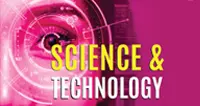Scientists Build DNA Nanoantenna
Recently, a team of researchers developed the world’s tiniest nanoantenna made of Deoxyribonucleic acid (DNA) and polyethylene glycol (PEG) to study changes in the structure of protein molecules.
Key Highlights
- Process: A fluorescent molecule is first attached to the DNA, and then this fluorescent nanoantenna is attached to a biological nanomachine, such as an enzyme.
- Function: The nanoantenna works like a two-way radio that can both receive and transmit radio waves.
- It receives light in one wavelength, and depending on the protein changes it senses, it transmits light in another colour and this can be detected and studied.
- Viable Alternative: These fluorescent ....
Do You Want to Read More?
Subscribe Now
Take Annual Subscription and get the following Advantage
The annual members of the Civil Services Chronicle can read the monthly content of the magazine as well as the Chronicle magazine archives.
Readers can study all the material before the last six months of the Civil Services Chronicle monthly issue in the form of Chronicle magazine archives.
Related Content
- 1 India’s Electronics Leap
- 2 Stablecoins
- 3 Persian Blue
- 4 Biostimulants
- 5 India’s First Indigenous IBR Vaccine
- 6 Rogue Planet Cha 1107-7626
- 7 Maitri II: India’s Upcoming Antarctic Research Station
- 8 Maldives Achieves WHO ‘Triple Elimination’ Status
- 9 Google’s Willow Chip Achieves Verifiable Quantum Advantage
- 10 Military Combat Parachute System (MCPS)


